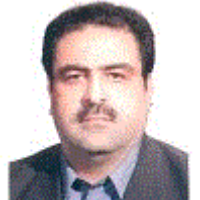The effect of ultrasonic waves on the amount of total coliform and E-coli in municipal wastewater sludge
Sludge treatment in wastewater treatment plants is one of the most difficult challenges for professionals and officials (Heidari et al., 2014). The most important indicator of the presence of pathogens in the sludge and wastewater is the presence of coliforms (Tchobanoglous et al., 2003; Metcalf & Eddy, 2003). Ultrasound waves at frequencies of 20 to 200 kHz with high levels of energy is one of the new methods for disinfection of water and wastewater treatment plants (Foladori et al., 2010; Show et al., 2007; Pilli et al., 2011). The purpose of this study is to determine the effect of ultrasonic waves with a low wavelength to improve removal rate of total coliform and Escherichia coli in sludge and determine the optimum operating parameters of the ultrasonic method.
This study is a cross-sectional study that was conducted in a laboratory-scale batch. Accordingly, during two seasons, 12 samples were taken at an interval of 15 days. In this research, variables include ultrasound density (0.375, 0.75, 1, 1.3 and 2.5) in watts on ml and time (1, 5, 10, 15 and 30) in minutes. In this research the influence of these variables on the total coliform and E coli of sludge is measured. The ultrasonic device used in this study was a probe with a maximum output power of 750 watts and frequency of 20 kHz. All bacteriological tests were conducted using the MPN method in a few steps of possibility, confirmation and completion and they were performed using 15 tube methods with units of MPN per 100 ml. All the experiments have done in the Nano, Water and Wastewater laboratory of the Department of the Environment at the University of Tehran. All the experiments were performed on the basis of standard methods for water and wastewater experiments with No. 9221 (APHA, 2005).
With ultrasonic waves and through the destruction of the cell walls of pathogens, viruses and microbes and the disintegration of pathogens result in the disinfection of sludge. The high temperatures caused by cavitation can also be locally led for the elimination of pathogens. It seems that the hydrodynamic force and local high temperature zones caused by the cavitation phenomenon are the most important mechanisms influencing sludge disinfection process through applying ultrasonic waves. The results of this study showed that removal of total coliform and E. coli increased with an increase in the time and ultrasound density. The experiments determined that the optimum operating parameters are a sonification time of 30 minutes, ultrasound density of 2.5 W/ml in a frequency of 20 kHz. The removal rate of total coliform and Escherichia coli under these circumstances was more than 99 percent which is equal to the removal of 2 logs.
Based on the results of this research, ultrasound waves can remove coliform and disinfect the sludge and can increase the treatment rate.
- حق عضویت دریافتی صرف حمایت از نشریات عضو و نگهداری، تکمیل و توسعه مگیران میشود.
- پرداخت حق اشتراک و دانلود مقالات اجازه بازنشر آن در سایر رسانههای چاپی و دیجیتال را به کاربر نمیدهد.



